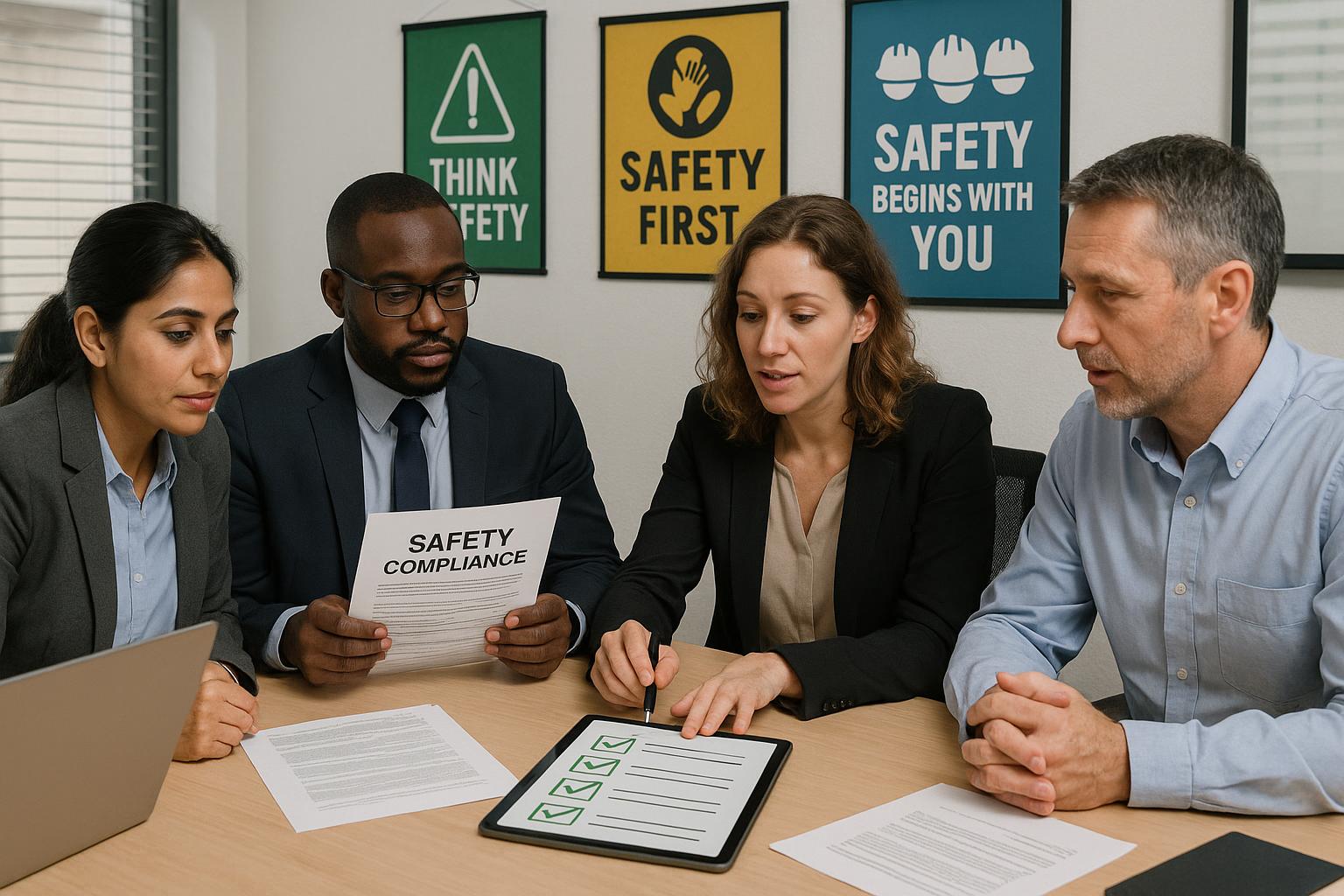Workplace safety is not just the responsibility of frontline workers — it’s a leadership imperative. When organizations prioritize accountability at the managerial level, safety outcomes improve, trust increases, and injuries decline. At Three Sixty Safety, we believe that true safety culture begins with leadership taking ownership of their role in hazard prevention, compliance, and employee well-being.
In this blog, we’ll explore how holding leaders accountable for safety outcomes creates a culture of integrity, responsibility, and action.
Why Leadership Accountability Matters in Safety
Accountability is more than assigning blame; it’s about fostering a proactive safety mindset across all levels of an organization — especially leadership. When managers are held responsible for safety outcomes, they:
- Invest in proper training and oversight
- Prioritize hazard identification and risk mitigation
- Support open communication about safety concerns
- Model behaviors that align with company safety policies
When accountability is absent, safety measures become reactive, inconsistent, and ineffective.
How Leaders Influence Safety Outcomes
Leaders have significant influence on how safety is valued and practiced across the workplace. Their impact includes:
1. Establishing Expectations
When managers clearly communicate safety expectations and enforce them fairly, employees understand what is required of them. Setting measurable goals, such as incident reduction or training completion rates, aligns teams with organizational safety priorities.
2. Enabling Training and Resources
Leaders must ensure their teams are equipped to work safely. This means investing in certified training programs, proper tools, and personal protective equipment (PPE). Three Sixty Safety offers customized safety training that helps leaders fulfill this responsibility effectively.
3. Driving Culture Through Example
When managers consistently follow safety procedures, attend training, and speak about safety as a core value, it sends a powerful message. This “leading by example” approach strengthens organizational culture — a theme explored in our blog: Leading from the Front: How Managers Influence Workplace Safety Culture.
Building Accountability Into Safety Programs
Accountability doesn’t happen on its own — it must be embedded into the structure of a company’s safety management system. Here’s how:
✅ Define Roles & Responsibilities
Clear documentation outlining who is responsible for what — from daily inspections to corrective actions — is crucial. Three Sixty Safety helps clients create customized safety systems that clarify expectations at every level.
✅ Use Data to Track Performance
Safety outcomes should be tied to KPIs. Leaders can use tools like safety scorecards or audit checklists to assess performance. At Three Sixty Safety, we support businesses through regular safety inspections that provide objective performance data leaders can act on.
✅ Enforce Consequences — and Rewards
Accountability means leaders are recognized when goals are met and held responsible when they aren’t. Consequences should be fair, consistent, and aligned with corporate values. Recognition for strong safety leadership is equally important and reinforces positive behaviors.
How to Hold Leaders Accountable (Without Blame)
Accountability should be constructive, not punitive. Here’s how to implement it effectively:
🔹 Conduct Regular Reviews
Set regular check-ins where safety metrics are reviewed with leadership teams. This keeps goals visible and reinforces the idea that safety is a shared priority.
🔹 Involve Leadership in Audits
Leaders should participate in internal and third-party safety audits. When executives walk the floor during assessments, it communicates commitment and transparency.
🔹 Encourage Upward Feedback
Employees must feel safe reporting concerns about unsafe practices — even when those concerns involve management. Anonymous reporting tools and a strong Joint Health and Safety Committee structure can help facilitate this.
Real-World Benefits of Leader Accountability
Organizations that embed leadership accountability into their safety strategies often see:
- Fewer recordable injuries
- Better employee engagement
- Higher compliance during audits
- Improved safety training participation
- Lower workers’ compensation costs
A strong example is one of our long-term clients in manufacturing. After integrating a leadership accountability model into their safety program, they reduced lost-time incidents by 40% in under 12 months.
Let Three Sixty Safety Help Build Accountability Into Your Safety Culture
We specialize in helping organizations align leadership behavior with safety outcomes. Through our services like:
- Perception Surveys
- Supervisor Safety Training
- Safety System Audits
…we help companies develop actionable, leader-focused safety strategies that stick.
Holding leaders accountable is not about assigning blame — it’s about building a culture of ownership, consistency, and commitment. When leadership walks the walk, the entire organization follows. Safety becomes a natural part of how business gets done.
At Three Sixty Safety, we’re ready to help you empower your leadership team and make accountability the cornerstone of your safety program.



